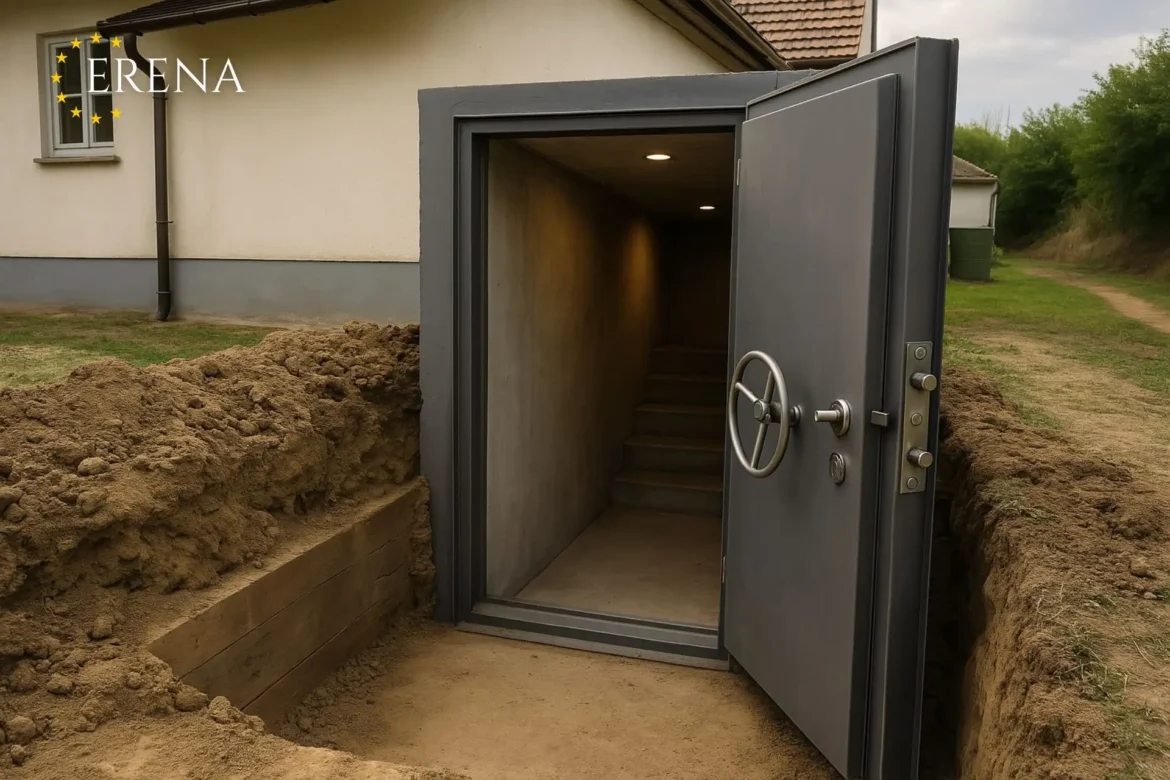When Ignacio Ortega began teaching wilderness survival courses in Spain over a decade ago, most of his students were hikers or nature lovers looking to improve their outdoor skills. But today, his clients are different — and their motivations have changed drastically.
“Now we’re seeing families, professionals, even retirees asking how to survive a chemical attack or where to find a nuclear-safe bunker,” Ortega explains. “Ever since the war in Ukraine started, something shifted.”
Spain, traditionally viewed as geographically distant from Europe’s front lines, is now feeling the ripple effects of global instability. The invasion of Ukraine in 2022 awakened concerns that were once considered fringe. And as international tensions mount, those concerns are being turned into concrete — quite literally.
Over the past year, bunker construction in Spain has quietly boomed. Once reserved for the ultra-wealthy or doomsday preppers, private underground shelters are increasingly being commissioned by average citizens who want to be prepared for the unthinkable.
From Niche to Necessity
Companies like Bunker VIP, based in Zaragoza, have seen inquiries skyrocket. In 2022, they built just two bunkers. By the end of 2024, that number had jumped to seventeen. “The phone doesn’t stop ringing,” said Fernando Díaz Llorente, the company’s founder. “We used to build for specific clients — now, it’s teachers, IT professionals, families with young kids.”
These shelters are not cheap. A fully equipped, nuclear-resistant bunker in Spain can cost anywhere between €100,000 and €500,000, depending on size, materials, and location. Even the air filtration systems alone can cost over €9,000. Despite the high price tag, Díaz says many clients are willing to stretch their budgets or take out loans to build what they now see as a survival investment.
Inside one recently built bunker, the walls are reinforced with thick concrete and steel. There’s a filtered air intake system, emergency power, and food rations stored neatly beside water tanks. An anti-radiation shower sits next to a compact sleeping area. It’s not luxury — but it’s safe.
“People don’t necessarily believe war will break out tomorrow,” said Díaz. “But they want peace of mind.”
Lack of Public Infrastructure
While the private bunker industry is expanding, Spain lags behind many other European countries in public shelter infrastructure. Unlike Switzerland, which legally requires all buildings to include nuclear shelters, Spain has no such system in place. In fact, the country has only a few publicly acknowledged bunkers suitable for modern warfare.
Among them is the secure shelter under La Moncloa, the Prime Minister’s residence, and an old Cold War bunker at Torrejón de Ardoz Air Base near Madrid. These facilities are designed for government continuity, not civilian use.
According to defense experts, there are no more than four public shelters in Spain that could realistically protect against a nuclear or chemical threat. The rest — mostly relics from the Spanish Civil War — are too outdated for today’s risks.
This shortage has led to increased concern among citizens, particularly as neighboring countries invest in strengthening their own defenses.
A European Pattern
Spain is not alone in this shift toward preparedness. In Germany, officials have begun restoring hundreds of Cold War-era bunkers and are developing a public shelter locator app. In France, the government is preparing to send survival guides to all households, outlining basic emergency procedures. And in Switzerland, a country long known for its civil defense system, every resident has access to a shelter by law.
Private bunker construction has followed similar trends. In Germany, prices for high-end private bunkers can exceed €1 million, while in France, compact shelters for two start around €40,000. Across the continent, what was once viewed as paranoia is now being normalized by governments and citizens alike.
Spain’s Response
The Spanish government has acknowledged the growing anxiety. Officials are currently developing a national civil protection plan to cover military threats — something not updated since the Cold War. A new survival manual is also in the works, similar to those already distributed in Nordic countries, which would guide citizens on how to act in the event of war or disaster.
But no large-scale public bunker programs have been announced, leaving the responsibility largely in the hands of individuals. Some are preparing bug-out bags. Others are stocking pantries or reinforcing basements.
“There’s definitely a preparedness culture emerging,” says Lieutenant Colonel Manolo Cámara, a Spanish survival expert. “We’re seeing more people taking self-reliance seriously. It’s not panic — it’s realism.”
Preparing for the Unthinkable
For many Spaniards, building a bunker is less about fear and more about control in uncertain times. Whether motivated by war in Ukraine, global instability, or just a growing sense that emergencies can happen anywhere, the interest in underground shelters reflects a deep societal shift.
Ortega, who once trained adventurers, now teaches nuclear emergency drills and chemical defense strategies. “The best survival is the one you avoid,” he reminds his students. “But if danger comes, you should know how to respond — and where to go.”
As Europe grapples with questions of security and resilience, Spain’s quiet bunker boom suggests one thing is clear: even in peaceful countries, the age of assuming safety is over.

